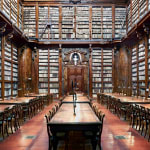
Candida Höfer German, 1944
Biblioteca Marucelliana Firenze I 2008
Inkjet print
237 x 180 cm. (93 1/4 x 70 7/8 in.)
Edition of 6 (#1/6)
Copyright The Artist
